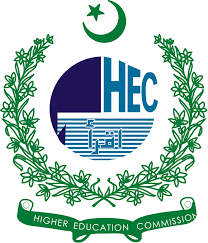Ali Farshi's Poem and Archetype
علی فرشی کی نظم اور آرکی ٹائپ
Abstract
Archetype is a term in psychology and anthropology; this is a combination of conscious and unconscious; with the help of this unconscious, all nations are connected. It is the reason for the creation of myths, giant beads, symbols, and folk stories. This world is the world of the archetype in as much as it contains nothing that is not an archetype. It could indeed be said that most of the problems of modernity result from ignorance of archetypes. A man should therefore understand what that means because, without such understanding, he would fail to understand himself. It is a term that is also used in Urdu literature. The concept of archetype is with every writer. Ali M. Farshi is a modern Urdu poet. Modernity is a very important and multi-meaning term that was initially considered synonymous with westernization. Modernity in the subcontinent entered in the form of translation and Punjab Association. Ali Farshi's concept of archetypes used in his poems is covered in this research article.
Reference:
1. Hasanuddin Ahmad, Ph.D., A Research and Critical Study of Urdu Translations of English Poetry, Hyderabad:
Villa Academy, 1983, pp. 6-8
2. Nasir Abbas Nair, Dr., How to Read a Poem, Lahore: Milestone Publications, 2018, p: 9
3. Hussain Azad, Nazm Azad, Martaba: Agha Muhammad Baqir, Lahore: Sheikh Mubarak Ali and Sons, 1947, p.38
4. Shahzad Ahmad, Rong, Psychology and Occult Sciences, Lahore: Sangmail Publications, 1997, p: 29
5. Ibid, p: 30
6. Nasir Abbas Nair, Dr. Ali Muhammad Farshi's Poem, Quarterly Publication, Karachi: March 2015, p: 14
7. Ibid, p: 14
8. Hameed Shahid, The Eighth Dimension: Ali Muhammad Farshi's New Book, Loveless Days, p: 16
9. Ali Muhammad Farshi, The forest calls me in the wind, Islamabad: New Books, 1999, p.92.
10. Nasir Abbas Nair, Illustrating Ali Muhammad Farshi, Contained in: Nazm Naw, Issue 3, Karachi: Nazm Naw Publications, Year: 220
11. Nasir Abbas Nair, Dr., How to Read a Poem, Lahore: Milestones Publications, Sun, p: 96
12. Ali Muhammad Farshi, The forest calls me in the wind, Islamabad: New Books, 1999, p.93.
13. Ali Muhammad Farshi, Life is not a case of suicide, Rawalpindi: Faiz-e-Laslam Press, 2004, p: 37
14. Ali Mohammad Farshi, Life is not a case of suicide, p: 20
15. Ali Muhammad Farshi, The forest calls to me in a strong wind, p: 100
16. Ibid, p: 60
17. Munir Sadiq, First Day Sunlight, Analytical Study, Content: Afaq, (Salanama), Rawalpindi: Qayyum Tahir, 2002.
P.: 254
18. Tariq Hashmi, The Third Dimension of Modern Urdu Poetry, Shama Books Publishers, Faisalabad, 2014, p: 201
19. Ali Mohammad Farshi, Alina, Rawalpindi: Harf Akademi, March 2002, p: 45
20. Ibid, p: 13
21. Satyapal Anand, The Plateau of Aleena and Irfan, Containing: Kontakt, Kontakt Literary Institute, Faisalabad: December 2007.
P.: 248
22. Ali Mohammad Farshi, The forest calls me in the wind, p: 16
23. Muhammad Hameed Shahid, Ali Muhammad Farshi. Death Walking in Sleep, Contents: Points, Issue 10, Faisalabad:
Kontakt Publications 2011, p: 594
24. Shahzad Ahmed, Rong, Psychology and Occult Sciences, p: 67
25. Mehnaz Anjum, Poetry of Ali Muhammad Farshi, Dissertation for MPhil Urdu, Islamabad: Allama Iqbal Open University,
2016, pp. 8-9
26. Ali Mohammad Farshi, The forest calls me in the strong wind, p: 88
27. Hameed Shahid, The Eighth Dimension: Ali Muhammad Farshi's latest book "Loveless Days", p. 18
28. Ibid, p: 8
29. Ibid, p: 26
30. Nasir Abbas Nair, How to Read a Poem, Lahore: Milestone Publications, 2018, p.9
31. Hameed Shahid, The Eighth Dimension: Ali Mohammad Farshi's latest book "Loveless Days", p.19
Copyright (c) 2024 Tahira Sabir; Dr Naheed Qamar

This work is licensed under a Creative Commons Attribution 4.0 International License.
Noor e Tahqeeq, LGU is fully open access and licensed under Creative Commons Attribution 4.0 International License.
CC BY: This license allows reusers to distribute, remix, adapt, and build upon the material in any medium or format, so long as attribution is given to the creator. The license allows for commercial use.
CC BY includes the following elements: BY – Credit must be given to the creator
Noor eTahqeeq allows the authors to retain copyright under the CC-BY license. However, authors have to sign a form agreeing to the publication of their article under the CC-BY license.







